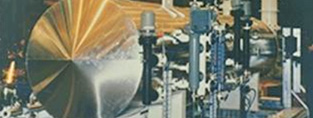
- (03) 5909 8218
- enquiry@fusionweld.com.au
Safety Engineering in Relation to Pressure Vessel Manufacturing
June 15, 2016

Safety engineers are trained to identify health and safety risks, to evaluate potential site liabilities and act as the engineering world's problem solvers. After all, we live in an age where rapid technological advances challenge our best design engineers. We need a professional regulatory service that can oversee these hazardous manufacturing processes and their installation domains. In pressure vessel manufacturing, we accomplish this feat by positioning safety engineering as a subset within the fabrication process, a guiding discipline that will govern every operating system tied to an installation's pressure vessels.
Safety Engineers Interpret Vessel-Compliant Codes
The responsible individual works alongside project leaders to ensure health and safety directives are properly followed, but that's only the beginning of a long list of duties. Scientific disciplines assess the engineering methodologies used to fabricate the sealed containers, all in service of preventing the worst-case scenarios that could trigger a catastrophic failure. In essence, the discipline assesses the "what ifs" of the field and incorporates mechanisms that diligently minimize such menacing events.
Protecting Life and Environment
Complex pressure vessel manufacturing standards enable designers to fabricate geometrically proficient storage containers. The manufactured containers are sourced from the best metals and built to the highest standards. Engineering mathematics and mechanical excellence are a given in this instance, with inspection routines establishing a form that's quality-assured. Meanwhile, the safety engineer invokes a parallelism strategy, a course that works in company with lead engineers to incorporate design features that protect the on-site workers and the local communities that reside nearby. Additionally, the competent professional regulates every other on-site system, which involves conscientiously seeking out the health and safety risks that could harm the local environment.
Managing Our Energy Batteries
While it's true that our largest pressurized containers either store or process caustic gasses and explosive fluids, the trained eye of a safety-oriented engineering professional sees these units as huge energy batteries. Capable of releasing energy as a life-threatening blast or a poisonous cloud, the safety executive counters mechanical threats by employing the pressure vessel manufacturing techniques mentioned above, but he also deals with the human factor, with instances where human error could create the potential for disaster. Therefore, our health and safety expert also works to ensure every worker is trained to avoid hazards.
The occupational health and safety field is a wide tract of hazardous land, a domain that requires a safety engineering subset, one capable of identifying and correcting mechanical and man-made flaws.
Contact Details
Fusion - Weld Engineering Pty Ltd
ABN 98 068 987619
1865 Frankston Flinders Road,
Hastings, VIC 3915
Ph: (03) 5909 8218
Optimized by NetwizardSEO.com.au
Recent Posts
- Compressed Hydrogen Storage Vessels: Material Selection, Design & Australian Standards
- Welding QA/QC in Oil & Gas Pressure Vessel Fabrication – Ensuring Code Compliance
- AS1210 vs ASME VIII Pressure Vessel Code: Key Differences for Australian Projects
- Mitigating Hydrogen-Induced Cracking in Pressure Vessels: Engineering and Material Strategies
- Storage Tank Solutions Australia: Field-Erected, Prefabricated & Self-Bunded Explained
- Reducing Environmental Risks: Self-Bunded Tanks in Australian Oil & Gas Operations
- Precision in Production: How Pressure Vessels Are Manufactured for Industrial Safety
- Shell & Tube Heat Exchangers: Improve Thermal Control & Energy Recovery in Petrochemical & Pharmaceutical Plants
- In-Service Inspection for Compressed Air Receivers for Power Plant Shutdown Prevention
- Power Plant Pipe Spooling Fabrication – Get Rapid, Code-Compliant Spools Ready for Installation
- Field Erected Tanks: Safe, Reliable On-Site Fuel Storage Solutions in Australia
- Custom Pressure Vessel Fabrication for Flammable Gases
Posts 2025
- Compressed Hydrogen Storage Vessels: Material Selection, Design & Australian Standards
- Welding QA/QC in Oil & Gas Pressure Vessel Fabrication – Ensuring Code Compliance
- View all articles…
Posts 2024
- Large Process Vessels: Optimising the Design for Maximum Efficiency [2025]
- Pressure Equipment Management System Installation: Detect Equipment Faults Early
- View all articles…
Posts 2023
- Pressure Piping System Inspection: A Gift of Safety for the Holidays
- Deaerator Inspections by Fusion-Weld Engineering and How They Reduce System Downtime
- View all articles…
Posts 2022
- How Fusion Weld Keeps Up With AS-NZS ISO 9001:2008 Standard
- Boiler Equipment Safety Inspection During the Summer Season
- View all articles…
Posts 2021
- Avoid These Factors and Practices that Contribute to Sealing Damage in Pressure Vessels
- Do's And Don'ts Of Industrial Boiler Inspection And Maintenance From Fusion-Weld
- View all articles…
Posts 2020
- What are the Risks and Hazards Involved in Pressure Vessel Equipment?
- How to Know if Your Pressure Equipment Needs Repair or Replacement?
- View all articles…
Posts 2019
- Factors that Contribute to Pressure Vessel Failure
- Pressure Vessel Regulations in Australia: What are the Mandatory Requirements?
- View all articles…
Posts 2018
- Pros and Cons of Spherical vs. Cylindrical Pressure Vessels
- What are the Different Hazard Levels in Pressure Vessels?
- View all articles…
Posts 2017
- Transportable Pressure Vessels: The Importance of Inspection and Safety Checks
- Fracture Mechanics and Stress Analysis of Cracks in Pressure Vessels
- View all articles…
Posts 2016
Posts 2015
- What Are Deaerators & Feedwater Vessels?
- Precautions and Safety for Compressed Air Receiver Vessels
- View all articles…
Posts 2014
- Demonstrating In-process Inspection Procedures
- Static Grounding Practices and Standards
- View all articles…